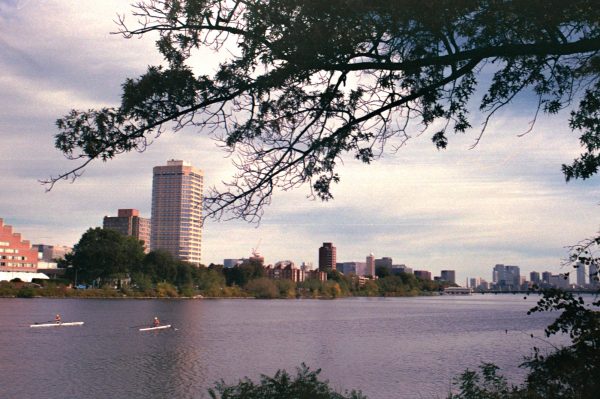A toxic algae bloom continues to thrive in the Charles River less than a week before thousands of rowers arrive for the Head of the Charles River Regatta, a three-day world-renowned sailing competition.

The bloom, one of the largest in years, has sparked concerns surrounding the impact of climate change on the health of lakes, ponds and rivers.
The regatta is still scheduled to take place as planned between Oct. 17 to 19, according to competition spokesperson Amanda Cox.
“Concentrations of cyanobacteria in the Charles River have fallen to levels below Department of Public Health guidelines, reducing the risk of skin irritation from contact with the water,” Cox wrote in a statement to The Daily Free Press. “If the second sampling shows that the cyanobacteria levels remain low, the DPH is expected to remove the advisory issued last week for anyone coming into contact with waters upstream of the MIT Boathouse.”
A health advisory for cyanobacteria downstream of Harvard Bridge was issued by the Boston Public Health Commission Aug. 1.
Cyanobacteria are microscopic organisms normally found in freshwater bodies. When levels of the bacteria grow to above 70,000 cells per milliliter or near those levels, the Department of Public Health will issue a health advisory, said Marielena Lima, river science program manager for the Charles River Watershed Association.
Contact with water containing high levels of cyanobacteria can cause respiratory or neurological symptoms, Lima said.
“Immunocompromised individuals, like kids or elderly people, would be the most impacted if they come into contact with the water,” she said. “But generally with cyanobacteria blooms, it’s really anyone who recreates in the water. ”
Despite the bloom, no one has been barred from rowing on the river, said Andy O’Brien, a member of the Riverside Boat Club.
“We’ve had guests come to the club and … say, ‘Wow, the water just looks exceptionally nasty,’” he said.
He said he has noticed an increase in algae blooms recently when he’s been rowing on the Charles.
“Back in … the 80s and the 90s, it used to be kind of formed in the basin, and you never really saw it or at least [not] to the extent that it is now,” O’Brien said.
Lima said the bloom was triggered by high levels of phosphorus in the water.
“In the summer, when you get these heat waves and really stagnant water … you have an excess of nutrients in the system. In our case, it’s phosphorus,” Lima said. “When they have too much phosphorus, then they can grow in population, and that’s when you get these cyanobacteria blooms.”
Rising temperatures, intense rainfall and prolonged drought conditions are increasing the abundance of blooms.
“Climate change is making cyanobacteria blooms more severe and more frequent,” Lima said.
Blooms are also fed by excess nutrient runoff delivered to lakes, ponds and rivers by stormwater runoff.
The Massachusetts River Alliance, an advocacy group, has called for improved stormwater management, which includes removing leaf litter from streets to keep leaves out of the river.
“The Charles River runs through many, many towns,” said Heather Clish, policy director at the Massachusetts Rivers Alliance. “It’s taking storm water and runoff from communities upstream.”
She said toxic blooms can economically impact tourism dependent communities bordering bodies of water.
“When there is a cyanobacteria bloom, people should not go in the water and allow your dogs to drink the water,” Clish said. “That can clearly impact people’s ability to enjoy the waterfront.